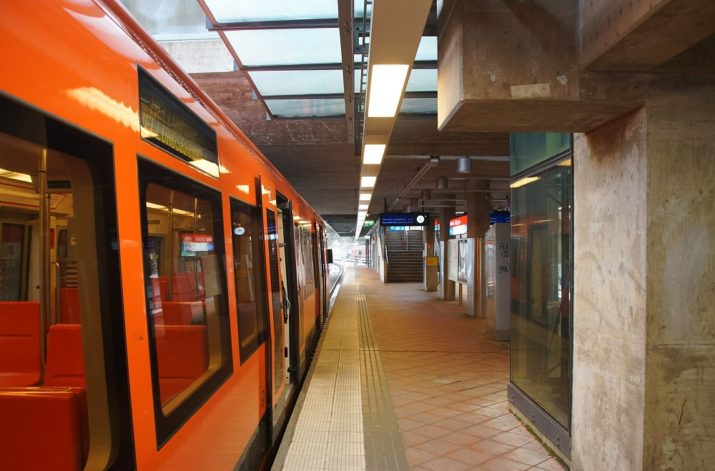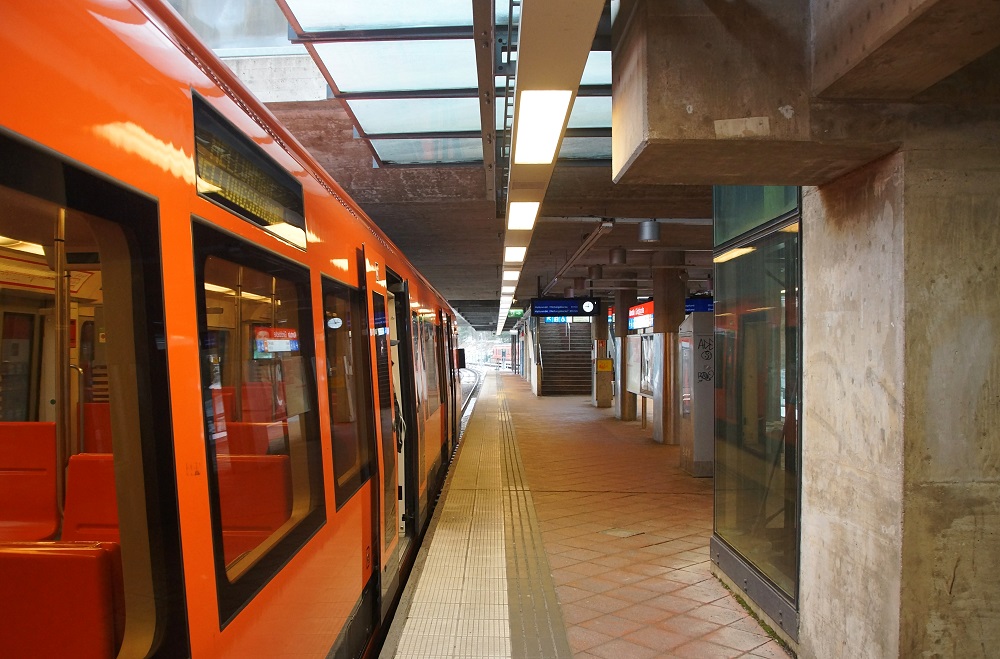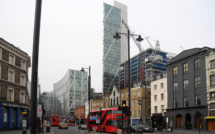

This is part of our special feature, Contemporary Urban Research in the European City.
Everyone living in Finland reacts to the name Kontula with mixed feelings. The suburban estate located in the eastern margins of Helsinki, sixteen kilometers from the city center, has a history that portrays the typical pathways of Finnish urbanization policies, but also shows the power of sociocultural appropriation of informal characteristics defining the area, with often paradoxical notions of community, belonging, and cultural intimacy. These extend to different realms of historical representation; the official measurement of historical time gives way to different arrangements of social time, and the boundaries demarcated in maps are muddled by the rhythms of everyday activities that result in new configurations of the cityscape.
This is a case study of layers of historical consciousness and shifting boundaries in a district that has a relatively short but extremely dense and complex history. It is based on ethnographic fieldwork conducted in Kontula that began in January 2017 and lasted for the whole year. During my time in Kontula, I met a variety of people with very different attitudes towards the area: the self-proclaimed aboriginals who moved into the very first suburban housing in the 1960s; the dedicated cultural actors who believed in the potential of the area despite its reputation; marginalized people enjoying their morning beers in what they termed as their last refuge in a gentrifying city; professionals of urban planning who had ambitious plans for the future of Kontula. Out of these experiences, my aim is to compose a culturally sensitive account of how operations of imagination stretch the boundaries of its neighborhoods, how the realm of informal invades the formally regulated contexts and how inhabitants of Kontula manage to locate and utilize various cracks in the narratives that are organized along the straightforward paths of contemporary urbanization. I will look into these questions through a dynamic of how urban transformation has shifted the relative location of Kontula and how the culturally intimate understandings and rhetorical registers are used to criticize the dominant narratives of urbanity.
History of a Suburban Estate: Relative Location and Cultural Intimacy
1960s–1990s: The Failed Promise of Urban Life
The settlement history of the area dates back to medieval era but the first suburban buildings had to wait until the mid-1960s, a period defined by intensive rural-urban migration and serious lack of affordable housing in Helsinki. In those days, Kontula signified the promise of new urban modernity. It was among the first suburban estates built in Helsinki; especially the people living in crammed conditions in the city center and inner city areas welcomed its spacious apartments with reliable piping and electricity, refrigerators and electric stoves, as well as balconies with views to the forested cliffs characteristic to the district. In fact, until the 2000s, the proportion of people who have lived in Helsinki for generations has been higher in Kontula than in the more central areas of the city (Kokkonen 2002).
However, Kontula has never been an isolated and strictly delineated district, but has constantly been in a dynamic relationship with other urban and suburban spaces. In addition to changes to the local infrastructural changes and the immediate experiential realities of its neighborhoods, the history of Kontula should be considered through the shifts in its relative location. This involves its relations with – and separations from – other places, as well as their value depending on their hierarchically ordered position in relation to other places, and the wider value system that is used to create this order (Green 2012:6, 2013). These include relations that are material and infrastructural, as well as moral, social, political, economic and historical (ibid.).
In the first decades of suburban Kontula, the principal narrative was one of isolation. The first inhabitants had to endure slow rides to other districts in crowded buses and the services in the area were limited to a few basic grocery stores. The relative location of Kontula was both infrastructurally and morally far away from the urbanity of the more central areas. In the official rhetoric, this was considered an early stage of urbanization, followed by gradual improvements in services and infrastructure. However, on the level of sociocultural imagination, the seeds were sown for several narratives that would define the life at a suburban estate in Helsinki. Many of these have transformed considerably over the years but nevertheless pop up frequently, especially in informal settings.
This brings us to the second conceptual tool that I have found useful in understanding the transformation of lifeworlds in Kontula. Together with the spatial orientation based on relative location, cultural intimacy (Herzfeld 1997) helps us to understand the parallels between formal and informal modes of thought and rhetoric.
According to my field data, the most significant dimension of cultural intimacy rests on suburban marginality, both in geographical and sociocultural terms, a sense of being in-between the city and the countryside, of the promises of urbanity and its discontents. This tension is evident in the recollections of the inhabitants who were the first to move into Kontula.
Ritva, seventy-five years of age, mentioned being one of the originals on the day we met. She had heard that I am writing a book about Kontula and wanted to make sure that I will talk to someone who really knows the place. Her words followed a pattern that I would become familiar with in countless other discussions:[1] “We moved in here with my husband in the mid-sixties, to the better side of Kontula, close to the church. Those were some of the first houses there were and the foundation stone of Kontula is right where we still live. Back then there was no metro nor a shopping centre with all the services.” She stopped for a while and the tone of her voice became more serious. “I did not work at the time and I felt I was stuck in here – my husband was lucky to take a bus to work every day – we had our own community in the neighborhood and you could always find help for whatever you needed. I have never lived in a village but it felt like that, except of these huge buildings with almost identical apartments. We felt abandoned and the city center felt far away. Nowadays it would be just a fifteen-minute metro ride but I rarely leave Kontula. I have everything that I need here.” She clearly wanted to finish with a lighter tone. “We are often joking with friends how the reputation of Kontula as a restless and dangerous area is actually our advantage: the living costs stay cheap because people are afraid of the place. And we definitely do not want any snobs invading the place and driving us away.”
This register of cultural intimacy lays a claim that the local knowledge is closer to the truth than the official narrative. The strong sense of community and neighborhood assistance was the principal narrative of the first decades of life in suburban estates, but it was from the beginning coupled with a feeling of isolation and rootlessness, a sense of marginalization related to the relative location of the district, that was simultaneously a site of human containers built on a swampland and a laboratory of immensely rich human relationships. The rhetoric of cultural intimacy establishes a social continuity between the very different registers of formal and informal and privileges the latter, turning the supposedly embarrassing features into something to be proud of (Herzfeld 1997).
The notorious reputation of Kontula began to develop already in its early years with stories of youth gangs vandalizing the area, frustrated by the lack of purposeful activities. There was a steady increase in the population, the open-air shopping center with over thirty stores opened in 1967 and the infrastructure improved on all fields. However, for many this signaled further isolation because the previously non-existent services were now located at their doorstep and there was even less need to leave Kontula.
Perhaps the biggest shift in the relative location of Kontula occurred with the opening of the metro line in 1986. Now there was a fast connection to the city center but the integration also resulted in a backlash, still vividly remembered by the inhabitants. Again, the narrative of progress and urbanization was questioned on local, culturally intimate grounds. The isolation and marginalization had become informally cherished features that countered the official history.
Tarja, who had moved into Kontula a couple of years before the opening of the metro line, summed up the conflict between different positions: “For years everyone was complaining about the bad transport connections and how people felt like they were being pushed into the margins of Helsinki. However, when the decision about the metro was finally made, the mood turned cautious. In a funny way, it felt like an invasion of our privacy: now there would be strange people coming into the community and the youth could roam freely all over Helsinki. Of course, we also felt proud of being… er… recognized in this way. At least we were not totally forgotten.” Nonetheless, the wider recognition of Kontula had to wait for a couple more years that marked a significant shift in its relative location in moral terms.
1990s–2000s: Stigmatized Suburban Estate
In Finland, the beginning of the 1990s was the time of a severe economic recession. It had far-reaching consequences that touched unevenly different areas, leading to labelling of some of the suburban estates as “recession estates.” This was the time that Kontula truly acquired its sinister reputation, a period when connotations of the name shifted from one of the generic suburban estates surrounding the center into a potent symbol of economic hardship and social problems – not just in Helsinki but all over Finland. Especially the open-air shopping center with its over twenty bars became the face of recession – easily accessible for journalists by the metro connection.
Reijo, who had been a teenager in the nineties, remembered well how Kontula was portrayed back then, and recognized the contradiction, associated with him being from Kontula, he had to deal with: “We had spent our childhood mostly in the immediate neighborhood. We were playing in the yards and the surrounding patches of forest and we would do our shopping at the local shopping center. It was really rare for us to go to the city center – this was before the metro line.” He paused for a moment and looked around the shopping center. “Our world felt extremely small. As teenagers we became increasingly frustrated about the possibilities here. If you were not into doing sports, there was nothing here. So we started going to the center in the evenings, especially Fridays and Saturdays, when there were other youths around. We used to hang around the Central Railway Station or go to rock ’n’ roll gigs that had no age limit. Everyone knew the reputation of Kontula and we felt that we had to live up to it – I would often get into fights for no reason. There was this pride of coming from a rough neighborhood we all shared but in reality we were just a bunch of insecure teenagers, not quite sure how to behave in the wider world.”
In Reijo’s case, the reputation of Kontula was something that he had begun to enforce. By emphasising the roughness of Kontula as a part of his identity, he felt safer across the boundaries of the district. At the same time, he had adopted the formal and widely shared narrative of violence and social problems in the area. Now, at forty-two years of age, he said that he would never move away; the nature was just outside his door, housing was cheap and there were nowadays abundant possibilities for his children’s hobbies. He claimed, repeating the stories that I had heard from countless other inhabitants, that the reputation of Kontula was a myth, the statistics lie about the social problems and that the reputation arose because once a reporter working for the biggest Finnish daily was beaten up while interviewing the regulars in a particularly dodgy drinking den.
2000s–:RedefinedBoundaries
It has been fascinating to study how the narratives defining Kontula travel in time, transforming in dialogue with the infrastructural changes and differently mediated stories that carry value judgements. If the early promises of modernization and urbanization had failed and turned into the sense of isolated but close community, Kontula approached the twenty-first century as a prime example of social ills of the time. In the terms of relative location, it was now connected to the city center with a fast and reliable metro link but had also become recognized as an example of failed urbanization throughout Finland. However, the underlying current of culturally intimate rhetoric countered this formal narrative in interesting ways: it emphasized the informally spelled out pride of living in a district with a sinister reputation, utilized the rhetoric of exaggerating the reputation of Kontula with tones and devices that only insiders recognize, and highlighted the sense of community that has the ability to laugh at its marginalization.
The last two decades of Kontula’s history have been dominated by discourses of multiculturalism. In comparison to many other European cities, the percentage of people speaking a language other than Finnish or Swedish as a mother tongue, 25 percent, is low, but in Finland it is one of the highest. This has changed the atmosphere in wide-ranging ways. Of the dense concentration of bars that the shopping center is famous for, almost all are nowadays run by immigrants and several have been transformed into restaurants that do not serve alcohol. For people not familiar with the area, a common reaction after taking the escalator from the metro to the shopping center, is the wonder of diversity, a feeling of entering into a city bigger than Helsinki.
Despite the rapid demographic change of the 2000s, the continuum with the past is established in powerful ways. The newcomers to the area learn quickly about the previous historical currents of Kontula and become familiar with the connotations that its name carries. Its relative location has been shifting in significant ways but they are informed by the past: the connections and separations are recognized in the present but their histories play a significant role in the formation of the contemporary understandings (Green 2013).
A single nightshift as a volunteer in a cafe for troubled youth, who frequent the shopping center, provided a vivid illustration of how the culturally intimate experiences of marginality, geographic isolation and reputation of Kontula, originating in the 1960s, are still prevalent in 2017. The evening passed while observing youths between thirteen and seventeen years of age (the cafe served those under eighteen), who visited the cafe for hot drinks and snacks, and returned after a while to their seemingly aimless walking around. They visited in small groups and the ones with immigrant background were a majority. In the casual chats that we had, the boundaries of the area, the identity as someone from Kontula and the reputation of the area dominated.
These three themes were all present in the discussion that I noted down with Ali, Nabil and Timo – together they summarize the current atmosphere of Kontula very well. They entered and started a friendly banter with Timo, an ethnic Finn, who lived in the adjacent Mellunmäki district. “What are you doing here? You are not from Kontula – this is our place; you should just stick to your own neighborhood!” Timo tried to argue that his school was located in Kontula but the two would take no notice. Ali elaborated his relationship with the area: “I was born here and this is where I feel at home. My parents are Kurds from Iran; first I am from Kontula; second I am a Kurd. I am not a Finn – I can never be. East of Helsinki is enough for me in Finland. I go shopping to Itäkeskus (one of the biggest shopping malls in Finland, two metro stops towards the city centre from Kontula) if I need something I cannot find in Kontula, or I order things from the Internet. I do not feel safe elsewhere in Helsinki. Even the other youths are different there… all kinds of weird clothes and piercings. Here I know everyone.” Later in the evening, he wanted to tell me more about his relationship with the area: “Everyone knows that Kontula was for bums and crazy people from the beginning. Back then they were Finns but now it is immigrants who come to live here. We are not tolerated elsewhere. Old people, young people, all bums.” Timo interrupted: “No future for us either!” and everyone started to laugh and high-five. This was a moment of pride rather than acknowledgement of failure.
Conclusion
The purpose of this brief account is to look into the universalist understandings of urbanization and present a case study that is sensitive to the local histories and conceptions of urban space. In the field of urban studies, catchwords such as segregation, gentrification and urban diversity have been used in very different contexts to describe and analyze the contemporary processes of urbanization. The value of ethnographic approach lies in its detailed focus on a particular context. The suburban estates such as Kontula have historically followed the wider currents of modernization and urbanization only superficially; their inhabitants are well aware of the officially presented discourses of development and can provide the expected answers if they wish to comment on urban policies. On the more intimate, I would argue more fundamental, level of awareness, a very different picture begins to appear: the everyday understandings of urban space connect with complex historical trajectories, redrawing concrete and symbolic boundaries at different scales and the formal value judgements are countered with culturally intimate knowledge and rhetoric, building up the foundation for community and belonging.
Pekka Tuominen holds a PhD in Social and Cultural Anthropology and is currently a Post-Doctoral researcher at the University of Helsinki. His research deals with the sociocultural dimensions of urban transformation in Istanbul and he has recently initiated a multidisciplinary research project in the stigmatised Kontula district of Helsinki, studying the urban transformation of the area and examining new possibilities of participatory urban culture connecting its neighbourhoods.
References:
Green, Sarah. 2012. On the Relative Location of Anthropology: Rethinking the Borders. In Suomen Antropologi: Journal of the Finnish Anthropological Society. 37(4): 5–10.
Green, Sarah. 2013. Borders and the Relocation of Europe. Annual Review of Anthropology. 42:345–361
Herzfeld, Michael. 1997. Cultural Intimacy: Social Poetics of the Nation-State. New York: Routledge.
Kokkonen, Jouko (ed.). 2002. Kontula: Elämää lähiössä. Helsinki: Suomalaisen Kirjallisuuden Seura.
[1] All the interviews have been translated from Finnish to English by the author and the names of the informants have been changed to protect their privacy.
Photo: FINLAND, HELSINKI – March 25, 2018: Fragment of the interior of the station Kontula metro in Helsinki | Shutterstock
Published on May 1, 2018.




